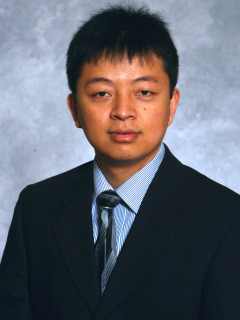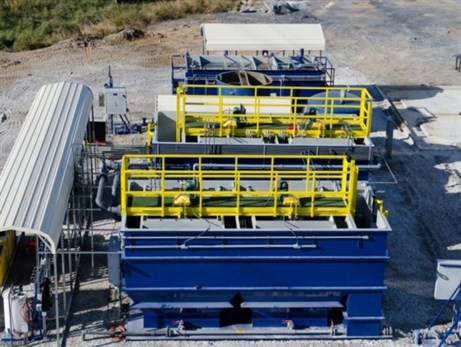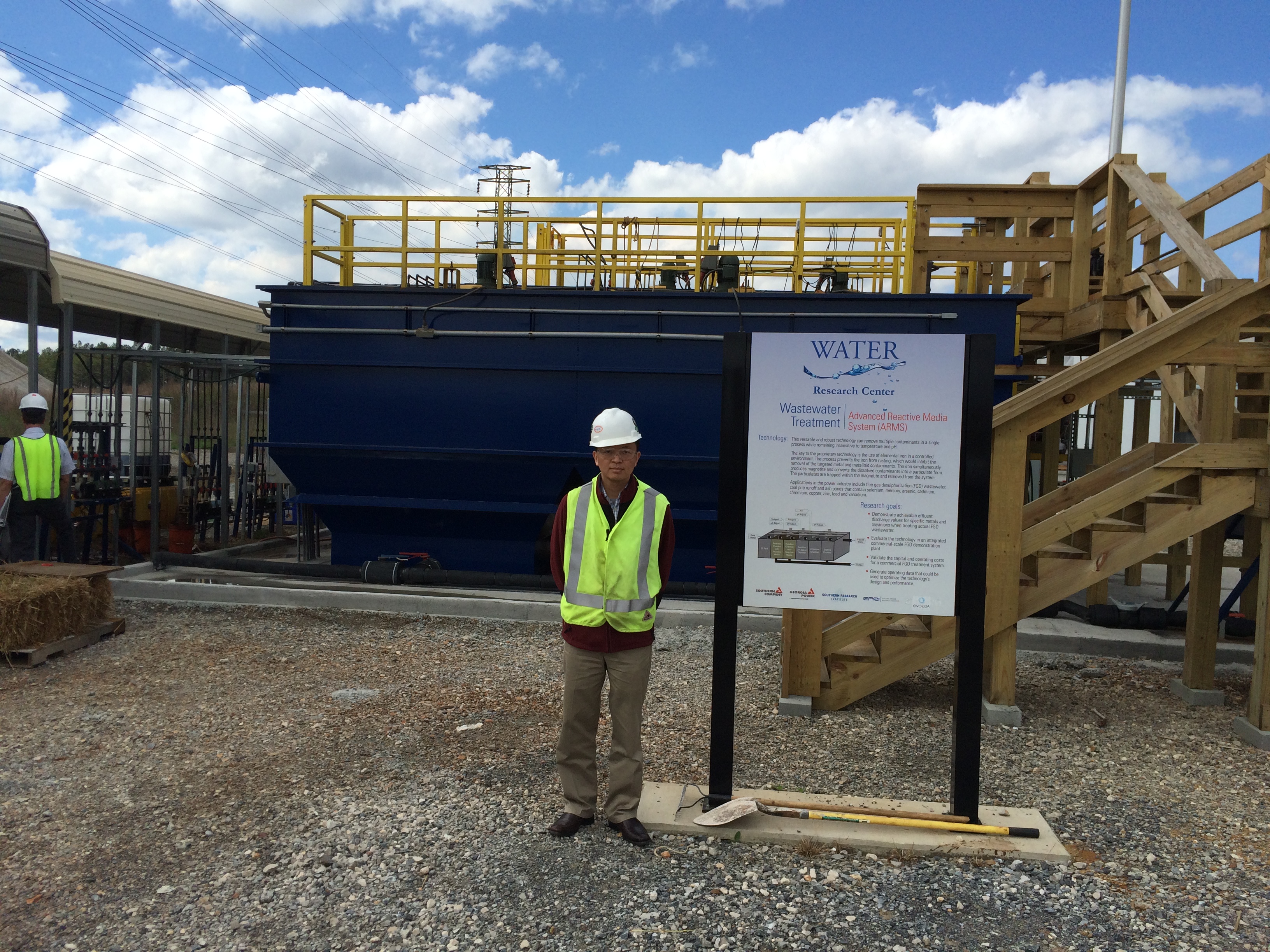The Earth can only handle so many contaminants in excess water released into the environment by homes, businesses and industries before becoming overwhelmed. To prevent this daunting introduction of pollutants to the environment, wastewater must be treated adequately prior to being released.

Dr. Yongheng Huang, associate professor in the Department of Biological and Agricultural Engineering at Texas A&M University, is working to develop cost-effective water treatment technologies to meet industrial, agricultural and domestic needs.
“We focus on discovering and using iron chemistry to immobilize and secure heavy metals and to remove nutrients and other undesired impurities from various impaired liquid streams,” Huang said. “We use these new understandings to develop innovative water technologies and solutions to help meet our society’s needs in reducing water pollution, protecting our environment and safeguarding public health.”
Huang’s research led to the invention of the Activated Iron Technology that has been exclusively licensed by the Texas A&M University System and Texas A&M AgriLife Research to Evoqua Water Technologies, LLC.
“The new technology has been commercialized as a cornerstone for Evoqua for water and wastewater treatment, including electric power, mining, refinery and other industries as well as for environmental remediation and municipal drinking water applications,” Huang said.
The invention was accomplished after a series of breakthroughs made by Huang in iron chemistry to help sustain iron corrosion reactivity. These breakthroughs have solved the issue related to the formation of passive iron oxide coatings on iron surface that could stop iron corrosion reaction, often referred to as iron passivation, which has troubled scientists and the industry for many years.
 “The main chemical used by the Activated Iron Technology is metallic iron powder, which is inexpensive and widely available around the world.” Huang said. “With the solving of the iron passivation issue, the technology could now use the full reactive power of iron for targeted contaminant treatment, thus greatly reducing the usage rate of the chemicals and generating less solid wastes.
“The main chemical used by the Activated Iron Technology is metallic iron powder, which is inexpensive and widely available around the world.” Huang said. “With the solving of the iron passivation issue, the technology could now use the full reactive power of iron for targeted contaminant treatment, thus greatly reducing the usage rate of the chemicals and generating less solid wastes.
The new technology is robust and versatile, capable of removing a broad spectrum of toxic materials from some of the most challenging and complex wastewaters. The materials removed include metals such as selenium, mercury, arsenic, chromium, cadmium, vanadium and lead.
If these metals were left untreated in the wastewater and discharged into the receiving water bodies, they could hurt the health of the environment, disrupting the ecosystem, and in many cases, pose an immediate or long-term threat to human health.
“Through this process, soluble and toxic heavy metals in wastewater are transformed and secured in non-toxic solid forms, mostly being incorporated into the iron rust produced from iron corrosion,” Huang said.
The new technology is a solution for industry to be within the new United States Environmental Protection Agency (USEPA) Effluent Limitations Guidelines (ELGs).
“The activated iron technology is a cost-effective solution for the steam-electric power industry to comply with the new USEPA ELGs on mercury, arsenic and selenium discharge,” Huang said. “With the success of the activated iron technology, a single treatment can now decrease selenium, arsenic and mercury simultaneously to below the ELG limits; particularly it can remove mercury to a much lower concentration than other technologies can achieve.”
Effective in removing a broad spectrum of heavy metals and metalloids from many of the most challenging and complex water streams, the technology is gaining attention in various industries around the world.

"In North America alone, it is expected that nearly 200 coal-fired power plants will be required to install new wastewater treatment facilities at a total cost of billions of dollars in the next few years in order to comply with the new ELG regulation,” Huang said. “The technology, being part of the clean coal solution, could contribute in a significant way to reduce pollution associated with coal industry. Similarly, the technology can be used in many industries troubled by heavy metals pollutions around the world.”
Huang’s team is aiming to refine and further improve the Activated Iron Technology and expand the application scope to cover more pollutants and impaired water sources. In addition, the team digs into the fundamental chemistry to further advance the understandings of the mechanisms and kinetics related to the interactions among metallic iron, iron oxides and contaminants.
“We believe there are numerous potentials in iron chemistry that have yet to be discovered and that may help solve some existing or emerging environmental problems,” Huang said. “We will strive to advance the science of iron chemistry and fulfill its potential as a powerful tool for protecting our environment and human health.”